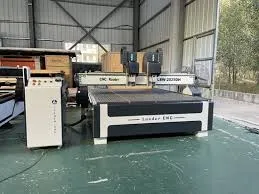CNC routing can fabricate aluminum parts, offering precision, speed, and versatility across industries like aerospace, automotive, and electronics that use the material. Whether in prototyping or real-time manufacturing, the cost is an important factor, and understanding the price of aluminum CNC router can help you budget.
Several variables affect the overall cost, including the type of aluminum, the machining complexity, and the level of finishing required. In this article, we will delve into what CNC routing aluminum is, the factors influencing its cost, and how you can estimate the price for your custom aluminum parts.
What is CNC Router Aluminum?
CNC routers are tools that automate the cutting, shaping, and engraving of materials such as wood, plastic, and metals. They are particularly useful for aluminum because they can handle intricate cuts and deliver high levels of precision.
Aluminum is a versatile material with favorable mechanical properties like corrosion resistance, strength-to-weight ratio, and ease of machining, making it a popular choice in various industries.
Aluminum sheets, plates, or blocks are placed on the CNC router table, and the machine’s cutting tools remove material layer by layer to create the desired shape. CNC router aluminum projects can range from simple, flat parts to highly complex, three-dimensional components.
Key Factors That Affect the Price of CNC Router Aluminum
Several factors influence the total cost of CNC routing aluminum. These factors vary from project to project, but they essentially fall into the following categories:
Material Grade and Type
The specific type and grade of aluminum used are the first critical elements in determining price. As mentioned, common grades like 6061 are affordable and versatile, while more specialized grades like 7075 or anodized aluminum will be more expensive. In addition, the thickness and size of the aluminum stock will directly impact material costs.
Machining Time
The part’s complexity also plays a significant role in determining the cost of CNC router aluminum. Simple designs that require minimal cutting, drilling, or shaping will take less time to machine and, therefore, cost less. However, parts with intricate geometries, tight tolerances, or deep cuts will take longer to manufacture, increasing the machining time and cost.
Simple Parts: Flat shapes with minimal detailing may take only a few hours to machine, leading to lower costs.
Complex Parts: Multi-faceted designs with numerous cuts or 3D contours may require multiple passes and extended programming time, increasing machine hours.
Tooling Costs
CNC routing aluminum requires specialized tools like end mills and drills to cut through metal. The wear and tear on these tools contribute to the project’s overall cost, especially if the design involves long runs or precise cuts.
Standard Tooling: Standard carbide tools will suffice for basic cutting and shaping, keeping costs moderate.
Advanced Tooling: If your project requires ultra-precise cuts or uses more challenging aluminum grades like 7075, you may need premium tooling, which will increase the cost due to tool replacement and wear.
Volume of Production
The scale of your production—whether it’s a one-off prototype or a large batch of parts—also affects the price. High-volume CNC machining orders generally benefit from economies of scale, where setup costs are spread over multiple units, reducing the per-part cost.
Prototypes or Small Batches: The setup and programming costs can constitute a large portion of the price for small quantities. Expect to pay a premium for low-volume jobs.
High-Volume Production: Larger orders allow for reduced unit costs as the fixed expenses are amortized over more parts, lowering the overall price per part.
Surface Finishing and Post-Processing
After the machining process, some parts may require additional finishing to meet aesthetic or functional requirements. Finishing processes like anodizing, powder coating, or polishing can enhance the appearance and durability of the aluminum but come at an added cost.
Anodizing: A protective oxide layer that improves corrosion resistance and can add color to the part. The cost depends on the part size and anodizing type but typically ranges from $0.10 to $0.50 per square inch.
Polishing: For applications that require a smooth, shiny surface, polishing can significantly increase labor and material costs.
These post-processing steps, while adding value, should be carefully considered in your overall budget.
Custom Design and Programming
Creating a custom CNC program for your part is a crucial step, especially for complex geometries or highly detailed designs. This involves translating CAD files into CNC toolpaths that guide the router’s movements. The time required for programming will vary based on the part’s complexity and the software used.
Basic Design: Simple, pre-set designs with minimal customization can reduce programming costs.
Custom Programming: More intricate parts may require advanced CAM (Computer-Aided Manufacturing) software and longer programming times, increasing the overall cost.
Depending on the intricacies involved, some CNC services may charge an initial setup or design fee ranging from $100 to $500 for custom designs.
Conclusion
Several factors, including the type of aluminum, the complexity of machining, and the production volume, influence the price of CNC router aluminum. Businesses and individuals planning CNC router aluminum projects must clearly define their design, material, and production requirements before obtaining quotes. Understanding these cost factors can also help them optimize their designs for manufacturability, reducing unnecessary expenses while maintaining high quality.





